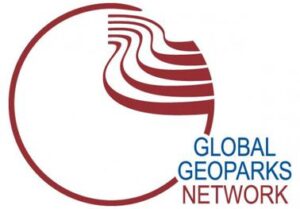GS3 – Environment

Context:
UNESCO has included 16 new sites from 11 countries in its Global Geoparks Network. Notably, North Korea has joined for the first time, and Saudi Arabia introduced two new geoparks. In 2025, UNESCO celebrated the 10th anniversary of its International Geoscience and Geoparks Programme, a key initiative in Earth Sciences.
International Geoscience and Geoparks Programme (IGGP):
Launched by UNESCO in 2015, the IGGP is focused on enhancing the link between geological heritage and sustainable development by fostering international cooperation in geoscience research and education.
Main Pillars:
- International Geoscience Programme (IGCP): Promotes collaborative scientific research on global geological challenges.
- UNESCO Global Geoparks (UGGp): Acknowledges areas of geological importance that are managed for conservation, education, and sustainable development.
What are UNESCO Global Geoparks (UGGp)?
UGGps are unified geographical areas with sites and landscapes of global geological significance, managed in a holistic manner for conservation, education, and sustainable development. As of 2025, there are 229 UNESCO Global Geoparks across 50 countries. India does not have any UNESCO Global Geoparks as of April 30, 2025.
Criteria for UNESCO Global Geopark Designation:
- Geological Heritage of International Value: Must possess geological heritage that holds international importance.
- Effective Management Structure: Managed by an organization recognized under national law.
- Visibility: UGGps promote local economic development, mainly through geotourism, which requires the area to have adequate visibility.
- Networking: Membership in the Global Geoparks Network (GGN) is mandatory.
Is the Designation Permanent?
The UNESCO Global Geopark status is granted for four years, followed by a revalidation process.
- Green Card: If the site meets the standards, it retains its status for another four years.
- Yellow Card: If standards are not fully met, a yellow card is issued, giving the management two years to improve.
- Red Card: If standards are not met within two years, a red card is issued, and the area loses its UNESCO Global Geopark designation.




